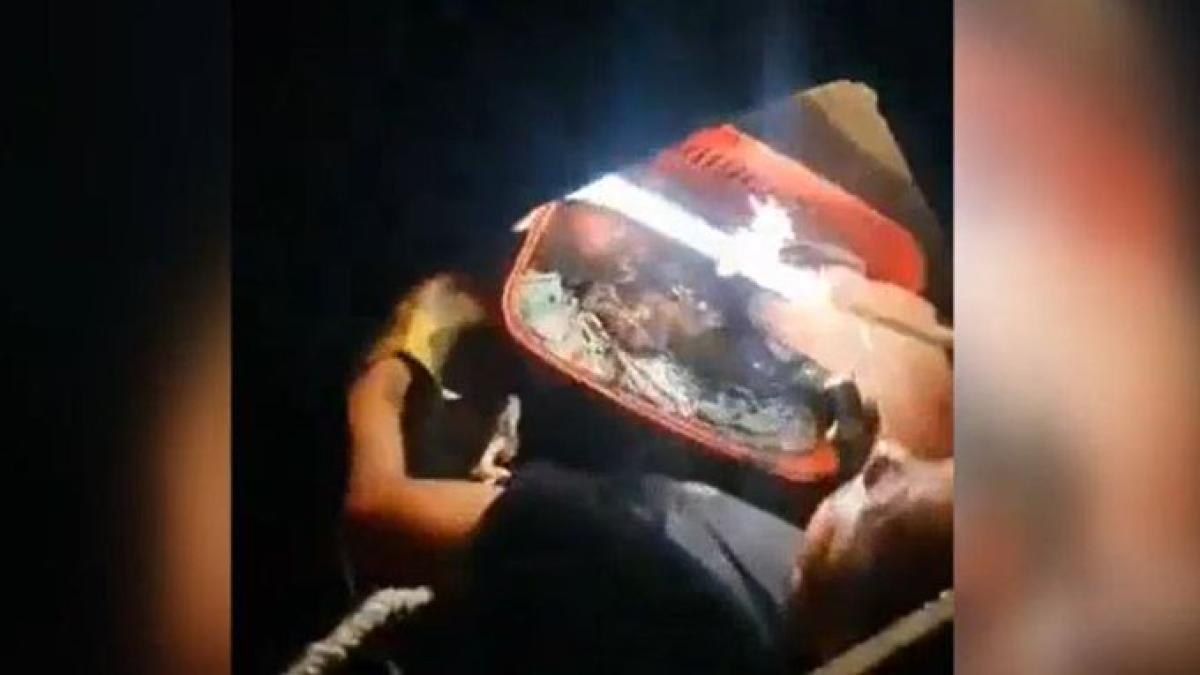A German ambulance was on its way from Devau, Germany, to Kemi in the middle of a continuation war. Then something unexplained happened over Espoo.
The sound had to be awful.
It was 12.55 pm, the whole of Soukanlahti was ringing.
The metal screamed against the ice, and finally there was a loud bang.
Someone had to hear that noise.
On the fifth day of January 1944, a German Ju-52 ambulance landed in Espoonlahti.
Nearly 77 years later the same beaches are quiet.
A brave angler tries his luck on the watery ice, avant-garde swimmers make joyful screams.
Do they know about the wild series of events that were once experienced in the same place?
The Souka Boat Club on the Klobben Peninsula has entered hibernation. The boats have been brought ashore for the winter.
A German plane crashed into the sea area between Klobben and Björkö in the Gulf of Espoo.
About the case little is known.
Helsingin Sanomat did not write about the forced landing of a German plane. On the other hand, it was not special, as all sorts of accidents and much worse happened during the war.
Old photos show the scene of the accident.
Military officer Niilo Helanderin The photo taken shows a handsome white villa in the background.
This is an architect Jarl Eklundin designed by Villa Korsnäs in 1935, which still stands in the same old location in Laurinlahti, Espoo.
In the background of the picture taken at the scene of the accident is Villa Korsnäs.
In the photos also pushed by a small, rocky island. According to the map services of the city of Espoo, the island of Klobben was still located in 1966. In 1968, the islet was connected to the mainland.
There is a mention in the archives of the Navy that the plane had dropped northeast of the island of Björkholm. As there is no island called Björkholm in the Gulf of Espoo, it was probably the island of Björkö southwest of Klobben.
The plane crashed between the islands of Björkö and Klobben.
What about what is known about the plane crashing into the ice?
The data of the Finnish Air Force Museum show that this was an ambulance unit of the German Northern Air Force, ie Luftflotte 5, ie an ambulance plane.
The aircraft model was called the Junkers Ju-52. The German company Junkers manufactured these passenger and transport aircraft between 1930 and 1945. In civilian use, the aircraft could comfortably accommodate 17 passengers.
Familiarly, the machines were called Aunt Ju aka Aunt Ju.
Villa Korsnäs can still be seen north of Klobben.
Air Surveillance Company according to the information, the ambulance had apparently departed the same morning at 9.15 am from Devau Airport in Königsberg. Königsberg is now known as Kaliningrad, which belongs to Russia.
The plane was to stop in Tallinn, but for some unknown reason the Germans had traveled directly across the Gulf of Finland.
The destination of the ambulance was its base in Kemi.
This aircraft model can fly about a thousand kilometers on a single refueling.
The shortest route from Devau to Kemi is about 1,200 kilometers, so maybe Tallinn should have refueled.
Something went wrong on the flight.
Was it out of fuel, though? Did the machine malfunction? Was the pilot lost on the route?
At 12.55, a German plane made a forced landing near the shore in the Gulf of Espoon.
There was luck in the case. The sea was already frozen, and the plane did not plunge into the ice-cold water.
However, it sank dangerously into the ice. In the end, only the tail of the machine remained visible.
The pilots and passengers of the plane got out of the plane on their own and were safe along the ice.
Based on a message from Sökö Air Force Station, the incident was reported and two wagons, one freight wagon and one ambulance were sent to help. According to the data, seven or eight people were injured in the forced landing.
The investigation of the accident remained with the Germans.
The German National Archives has not responded to Helsingin Sanomat’s request for information.
The plane crashed in front of Klobben in January 1944. The towing took place between January and April.
On the case there was at least one eyewitness. A woman was standing on high cliffs, perhaps on Kasavuori in Souka, and saw the planes’ engines shut down and the plane crash into the ice.
Farm owner from Kauklahti Åke Hagman and his spouse Ebba Hagman recalled the events later in an interview with the Espoo City Museum.
The Hagmanian couple remembered hearing the story from the woman present. They themselves were not present.
According to an eyewitness, the plane crashed into shallow water where the ice was still weak. According to an eyewitness, there was a doctor on board who thought it was a normal landing on the Finnish crust.
Once the passengers had reached safety, the children from Souk arrived at the scene. They marveled at the German plane up close, someone might have dared to touch the plane.
The wreckage of the plane was towed off the site during the same spring.
Kai Mecklin, the museum director of the Finnish Air Force Museum, has helped find out about the emergency landing of the Ju-52 ambulance.
.
#Espoo #Nazi #plane #crashed #Gulf #Espoo #crumbs #information #incident #miracle #happened #sky





